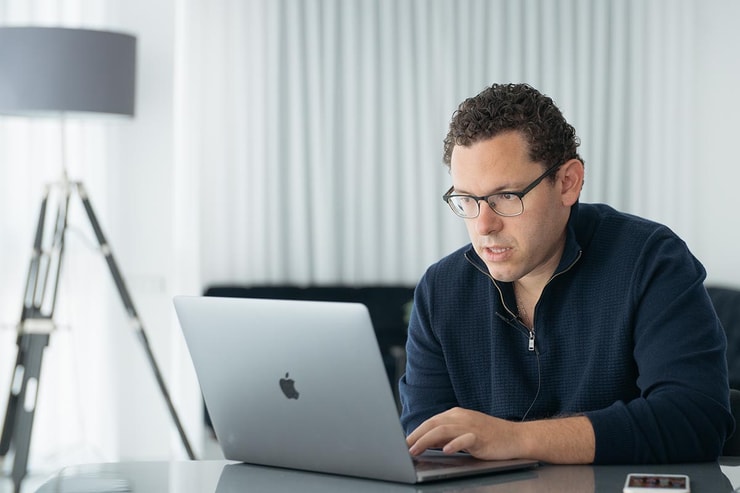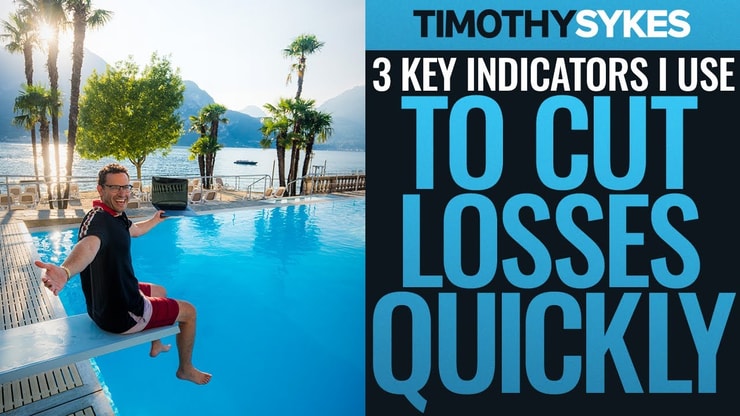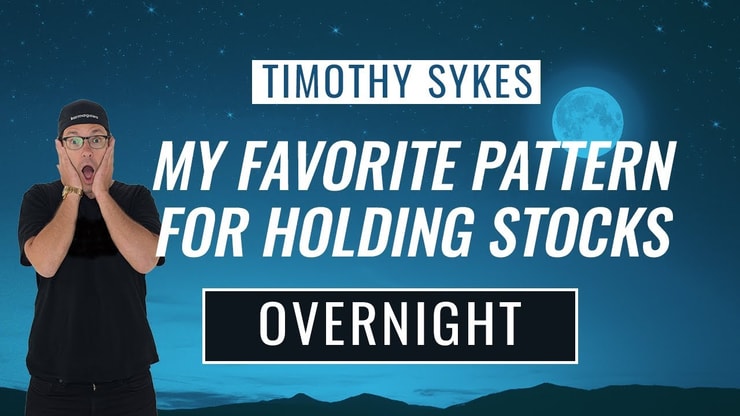If you’re new to trading, chances are you have questions. So in this post, I’ll answer 20 of the most frequently asked trading questions.
It’s important to get answers from traders who are experienced and successful. There are so many fakes in this industry. Make sure you really check out the traders you follow. There are too many newbies out there who are just guessing.
I started Profit.ly so traders can share their verified trades. I want to add transparency to this industry. Frankly, it’s been lacking in trading for far too long. But, it only works if traders use it, and so many traders don’t want to share their losses.
I wouldn’t trust anyone who doesn’t share their trades — wins and losses.
Let’s get to the top 20 trading questions I hear the most…
Table of Contents
- 1 #1: What Are Penny Stocks?
- 2 #2: How Much Money Do I Need to Start Trading?
- 3 #3: Which Broker Should I Use?
- 4 #4: Where Do You Find Your Stocks to Trade?
- 5 #5: What Should I Study?
- 6 #6: How Should I Prepare Before a Trade?
- 7 #7: What Patterns Should I Trade?
- 8 8: What Position Size Should I Use?
- 9 #9: Should I Trade OTC or Nasdaq Stocks?
- 10 #10: How Long Will It Take Until I’m Successful?
- 11 #11: When Should I Consider Trading Full Time?
- 12 #12: How Much Money Can I Make Trading?
- 13 #13: What Makes a Successful Trader?
- 14 #14: How Do You Read Level 2 and How Important Is It?
- 15 #15: How Important Is Premarket and Post-Market Trading?
- 16 #16: When Should I Cut Losses?
- 17 #17: What Is the Pattern Day Trader Rule (PDT)?
- 18 #18: Can I Trade With a Full-Time Job?
- 19 #19: Can I Really Trade From Anywhere?
- 20 #20: Why Do 90% of Traders Fail?
#1: What Are Penny Stocks?

A lot of people have their own idea of what a penny stock is. I classify a penny stock as a stock that trades $5 per share and below. These can trade on the OTC Markets (OTCBB, OTCQB, or OTCPK). There are also penny stocks on Nasdaq, NYSE, and AMEX.
Sometimes I trade stocks over $5. But I prefer to stick with penny stocks on the OTC and Nasdaq exchanges.
Penny stocks are more volatile and have bigger price swings than stocks of larger companies. Volatility can mean more opportunities.
Penny stocks are some of the most hated stocks in the market. But once you see the potential in this niche, you’ll love them as much as I do.
If you’re just learning about penny stocks, check out my free Pennystocking 101 guide for beginners.
#2: How Much Money Do I Need to Start Trading?
There’s no right answer for this. You can start with as little or as much as you want. Some of my students started with $500 all the way up to $25,000.
My student Tim Gritanni started with $1,500 and lost it all. He had to start over with another $1,500. Since then, he’s made over $9 million.* He says if he started with more money and lost it, he wouldn’t have been able to start over and find his success.
No matter how much you start with, chances are you’ll lose in the beginning. It’s OK to start with a small account.
More Breaking News
- Netflix’s Surprising Surge: Investors Wonder If Now’s The Time To Dive In?
- Quantum Leap: Is IonQ’s Stock Set to Skyrocket?
- Arm Holdings’ Stock Surges: Opportunity or Overvalued Mirage?
[*These results are NOT typical. Roughly 90% of traders lose. Always remember trading is risky, and never risk more than you can afford.]
#3: Which Broker Should I Use?
No matter your trading preference — like blue-chips or low-priced stocks — you want to choose the right broker. A lot of brokers don’t show low-priced stocks on their scanners. Some won’t even let you trade them. They consider penny stocks too risky.
Day trading moves fast. I’m in and out of positions quickly, sometimes in minutes. So you need a broker that can fill your order quickly. Executions on the OTC Markets can be especially difficult. These are the brokers I use.
Do your research to find the broker that will best suit your strategy. If that includes short selling, you need a broker that will have shares you can borrow.
#4: Where Do You Find Your Stocks to Trade?
I use StocksToTrade and I look for the biggest percent gainers.
I’m not hiding any secret tricks or search tools. I helped develop StocksToTrade around my specific strategy. It’s all right there for you to use. There are 40+ built-in scanners specifically designed to find the low-priced stocks I like to trade.
It also includes a Twitter search tool so you can search trending tickers. It’s great for finding stocks that newbie and over-aggressive shorts are trading. They love to brag about their positions. Watch for potential short squeezes. Especially if it’s a stock on its first green day with a news catalyst.
Try StocksToTrade on a trial and see what it can do. This is a powerful tool.
#5: What Should I Study?
Study everything you can — books, my video lessons and DVDs, other successful traders, and charts.
When you study charts, look for former runners — stocks that spiked big in the past. Traders tend to remember these spikers. The chance they can spike again on high volume is greater.
This question drives me insane: “Which DVD or video lesson should I watch?”
Watch all of them! One DVD or video lesson won’t tell you everything you need to know about the market. There are so many nuances to learn in the market…
That’s why I offer so many different resources for your education. You can start with the videos on my YouTube channel. My “How To Make Millions” DVD is my most comprehensive guide, and all proceeds go to charity.
For more in-depth education, sign up for Pennystocking Silver and get access to my video lessons and chat room.
For the most dedicated student, I offer my Trading Challenge. It’s not for everyone. You have to apply. There are trading webinars every week with me and my millionaire students. You also get access to my library of DVDs, video lessons, and past webinars.
“The Complete Penny Stock Course” by my student Jamil (I wrote the foreword) answers so many frequently asked trading questions.
#6: How Should I Prepare Before a Trade?
Before you enter a trade, you need to create a trading plan.
Ask yourself…
What’s the pattern? What’s the best entry? What’s your risk level and your target price? You need to go over all the indicators.
These are all the things you should know before you take a trade. Otherwise, you’re just guessing and gambling with your money.
If you’re a Profit.ly member, check out my Trader Checklist guide. I go over seven essential indicators to consider before you make a trade. If you’re not a Profit.ly member, you can get a copy of my “Trader Checklist Part Deux” DVD.
#7: What Patterns Should I Trade?
There’s no right answer here. There are so many chart patterns and indicators. I like to keep it simple. I use support and resistance levels and trade simple patterns.
You need to find what works for you.
If you trade random stocks, you’ll get random results. Start with the basics. If you’re a new trader, you can start with learning multi-day and multi-month breakouts and the first green day on OTCs with news and volume.
If you’re learning short selling as part of your strategy, start with the first red day on overextended stocks. I don’t recommend shorting for newbies.
Please be sure to do this every morning: https://t.co/XIGh4SVHqA this pattern made me and my top students rich so get on it ASAP
— Timothy Sykes (@timothysykes) January 24, 2020
8: What Position Size Should I Use?
That depends on your account size and risk tolerance. Use a position size you’re comfortable with.
Trading small can help you gain experience. Even 100 shares can give you a good idea of how it feels to be in a trade. Try out your patterns and see what works.
How much you make in the beginning doesn’t matter. You’re really trying out strategies to see which ones fit you and your lifestyle the best.
#9: Should I Trade OTC or Nasdaq Stocks?
I personally prefer OTCs. I’ve traded these stocks for over 20 years. They tend to move smoother and slower than Nasdaq stocks. And they can really move on high volume with a news catalyst.
Occasionally I’ll buy Nasdaq stocks if the opportunity is right. But they tend to be choppier than OTCs. There’s more volume and competition — they can have more volatile price swings throughout the day.
That doesn’t mean one is better.
One thing to be aware of is that the OTC market can be hot or cold. Sometimes there are tons of plays, then it can be quiet for months. Learn that early on. Don’t overtrade or force trades.
#10: How Long Will It Take Until I’m Successful?
Everyone’s on a different time frame. Some catch on to the market quickly. Others may take longer. And it may not even happen for some people.
How much time can you dedicate to studying and watching the market? If you can study full time with no other responsibilities, you may pick things up faster. If you have a job, school, or family, it can take longer.
People have different learning curves. That’s why I don’t recommend setting goals based on time frames or income. Your biggest goal is to find consistency. Even if it’s in small gains.
Your idea of success may be totally different from other traders. What works for you might not work for someone else. There’s a lot of trial and error involved.
Once you find consistency, don’t let it go to your head. You need discipline and dedication to continue to improve your trading. Try to be better every day.
No matter how successful you get, never forget to stay humble and remember your roots/journey, $ does NOT change you, only your life
— Timothy Sykes (@timothysykes) January 24, 2020
#11: When Should I Consider Trading Full Time?
I don’t think new traders should trade full time. Unless you have enough cash for you to live off for a year or more … Even then, I don’t recommend it.
Too many traders get into trading thinking they’ll get rich quick. That’s not realistic. You just don’t know how long it will take you to be consistently profitable. Or if you’ll ever get there.
There’s a lot of other things to learn before you should think about quitting your day job. Don’t give yourself added pressure to have to make money. It can mess with your mindset and lead to serious trading mistakes.
Trading isn’t like a job with a steady income. You have to put in a lot of time and you’re not necessarily ever paid for it.
#12: How Much Money Can I Make Trading?

I wish more new traders were more worried about what they can do to be successful, rather than how much money they can make. If you get into trading and focus on how much money you can make — you have the wrong mindset.
Yes, you can make money in the markets. But you can also lose money.
Focusing only on profits can hurt your trading. You need to focus on the process. Study and gain experience in the markets. What’s happening in your trading? How can you improve and cut costly mistakes?
If you constantly chase profits, it can also lead you to overtrade and blow up.
#13: What Makes a Successful Trader?
I can’t say there’s one trait you need to be successful at trading. Some people think you need a degree in finance or to be some kind of math genius. I suck at math and I’m a successful trader…
What you need is dedication to studying and learning. You need to be adaptable. Learn from your losses. You constantly have to adapt to changing markets.
One thing all my successful students have in common is that they study their butts off.
They watch all the DVDs and video lessons. (Some more than once.) They ask questions. They work at improving their trading every day. Success doesn’t happen overnight.
Be persistent. You will experience losses, so how will you cope with them? Will you give up or learn from your mistakes?
#14: How Do You Read Level 2 and How Important Is It?
Traders often use Level 2 quotes to choose better trades and get better executions. A few cents/share here and there on every trade really does add up. Level 2 is a useful tool, but it’s still just a tool. It’s helpful, but buyers, sellers, and market makers can manipulate it.
Also, be aware that Level 2 is more useful trading OTCs than listed stocks.
Market makers can group orders together to make it look like there’s a bigger buyer or seller. Traders can place large buy or sell orders — a few cents off the best bid or ask — so it looks like there’s a big buyer or seller. They might be trying to make the price go in the opposite direction.
If there’s a large size on the bid, buyers might think there’s support at that price. So they start buying on the ask.
The same thing can happen to the ask. A trader can place a large sell order so it looks like there’s a big seller. That scares other sellers into selling into the bid. Then if the price gets to the large bid or ask, it disappears.
Trust the price action and the overall trend of the bid and ask. Is the bid moving up? Is the ask moving down? Use the chart to see the pattern and trend. Use the bid and ask only to see where the big groups of buyers and sellers are.
For in-depth Level 2 instruction, watch my Learn Level 2 guide. This DVD includes six hours of detailed Level 2 information and a 150-page manual. Learn how successful traders find pockets of opportunity.
#15: How Important Is Premarket and Post-Market Trading?
I rarely trade during premarket or post-market hours. When I do take a premarket trade, it has to be the perfect setup. Even then, it’s speculative so I trade very conservatively.
Why am I so cautious? A stock can trend up in premarket all morning, then tank at the open. Or it could have a big spike then slowly downtrend in premarket, only to spike at the open.
I’m interested in volume. High volume gets my attention, but it depends on the catalyst or news. Even if it seems like incredible news, I’m still not interested in taking a trade until regular market hours.
I want to see how the market reacts. There’s less volume in after-hours trading, so price movements aren’t an accurate reflection of overall market sentiment.
#16: When Should I Cut Losses?
My #1 rule is to cut losses quickly. That means getting out of trades as soon as they go against you.
Have a plan for every trade, and include a risk level where you’ll cut losses. Not sure where to cut losses? Brush up on technical analysis here.
#17: What Is the Pattern Day Trader Rule (PDT)?
The pattern day trader rule restricts traders from making more than three day trades per week if they have less than $25,000 in their trading account. A day trade is when you buy and sell shares on the same day. (Or sell and cover if you’re shorting.) Many new traders hate this rule.
I think it’s great. It makes you focus on the best setups.
If you feel you’re really restricted by this rule, look for overnight plays or swing trades.
#18: Can I Trade With a Full-Time Job?
Yes, you can trade with a full-time job. But it can be difficult depending on your job. If you have access to a computer during the day, it might be a bit easier.
Some people trade only in the morning, before work. Others buy stocks before the close to hold overnight. It really depends on your schedule and your time zone.
It’s possible to trade from your phone … but I prefer trading with a laptop. Technology improves every day, so trading from a smartphone might be a solid option soon. It will only get better with the implementation of 5G technology.
#19: Can I Really Trade From Anywhere?
As long as you have stable Wi-Fi, absolutely! It’s one reason I love trading so much. It’s not about the money, it’s about the freedom that can come with money and trading.
Sure, I could trade in New York with multiple monitors, chained to my desk. But I’d be miserable.
I prefer traveling and giving my time and money to charities I care about.
If you want to travel and trade, you need to consider your access to reliable Wi-Fi and the time zone you’re trading from. Market hours are 9:30 a.m. to 4 p.m. U.S. Eastern Standard Time.
Now for the final frequently asked trading question…
#20: Why Do 90% of Traders Fail?

90% of traders fail because they don’t study and they don’t prepare. They come into trading thinking it’s gonna be easy … Just buy any stock running then short it when it’s too high.
There is more to it than that … if it was that easy everyone would do it.
The reality is there’s a lot to learn. There are a lot of variables. And some things you can only learn through experience and making mistakes.
That’s why I always say to start small. Don’t go big in the beginning. Take singles instead of swinging for home runs. If you go in too big, you can blow up your account.
Respect the market — it’s always right. And it doesn’t care what you think or what your position is.
What’s your trading question? Let me know what you think in the comments … I love to hear from you!




Leave a reply